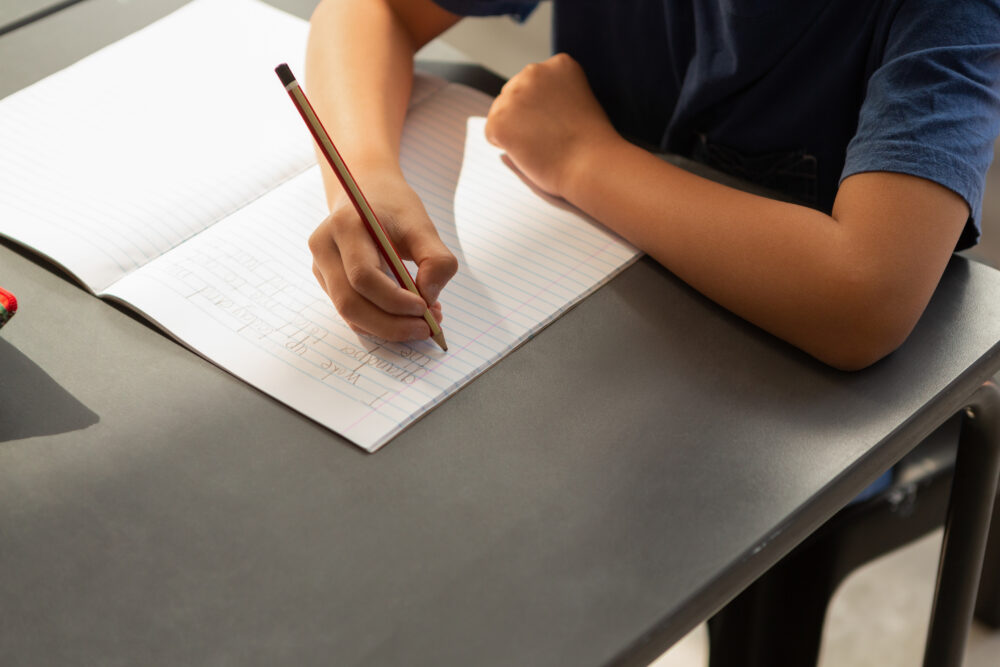Natalie Clayton, Consultant Trainer for Ruth Miskin Training, explains different stages of writing and shares smart strategies to teach writing
Dubai, May 25, 2022: Writing skills are almost indispensable to any profession. According to a McKinsey report, the average professional spends almost 28% of the work day reading and answering email. Besides email communication, drafting reports, sales proposals and marketing copy are all a part of today’s work responsibilities. So writing is a skill that cannot be ignored as it is valuable for learning and post-school success.
By getting a headstart with some simple activities and following a few strategies, teachers can help students to build strong writing skills early on. Natalie Clayton, Consultant Trainer for Ruth Miskin Training and Preparatory Class Teacher and Head of English Curriculum, Brighton College Dubai, is of the opinion that teachers should hook their youngest students into reading before technology takes a foothold in their lives. “We know that writing is born out of reading. The quality of the vocabulary students use in their writing reflects the language they have heard in the books the teacher has read to them, and later on, in the books they can read for themselves,” says Clayton.
As schools embrace digital devices in learning scenarios, there is a growing concern of students losing the understanding between ‘formal’ and ‘informal’ writing, understanding their language as per their audiences and also of short attention span. Plagiarism, cyber slang, impatience with the writing process are some of the other major concerns.
As per Clayton, technology serves a purpose in education. She suggests that with innovative curriculum in schools, it would be easier for educators to keep a balance between students’ writing skills and the usage of technological tools.
Meanwhile, in order to foster the love for writing, it is recommended that teachers start inculcating in students a practice for writing from the age of five as most children develop enough muscle strength and control to begin writing by that age.
“The small finger muscles are the ones most central to the writing process. Therefore, in early years, teachers should provide students with carefully curated activities that strengthen and develop these essential skills,” says Clayton.

In addition, teachers should plan and provide activities that allow for the necessary stability that allows the smaller muscles to do their job since the larger muscles of the hand, shoulder, arm and wrist also need to be strong and efficient.
“With physical development being the necessary prerequisite for the skill of writing, we would expect students to be able to hold, maneuver and use the correct amount of pressure when writing before they can become fluent and confident in their penmanship,” adds Clayton.
The ability to repeat and happily practice crawling, grasping and handling objects builds vital neural connections in young brains. This early physical development underpins the very early stages of writing, as per Clayton.
Pre-Literate, Emergent and Transitional are the three stages of students’ writing defined by trainers. The Pre-Literate stage begins with the Scribble Stage, moves onto Symbolic Stage, where the scribble marks have an intended message, and thereafter to Directional Scribble, which is the next stage that shows a lot more purpose. Children then progress to Symbolic Letters. This stage of writing development is the child creating their own attempt at letters.
In the Emergent stage, which is the second stage, writing starts with strings of letters. According to Clayton, they will often have no structure, may even be written backwards. They begin to break up their writing, although these letters won’t form words yet. “Children are incredibly curious and observant, and at this stage of writing they will replicate words that they see in the environment,” says Clayton.
Lastly, at the Transitional stage, children begin to use single letters to represent sounds, or whole words. “Once students know how to form their letter correctly, they begin to write words, dog, mad, mat,” says Clayton. “When learning how to form letters children should use a handwriting phrase to help them remember the orientation. For example, ‘around the apple and down the leaf’. Eventually, children can wean off the phrase and say the sound, a.”
As per Calyton, embedding the alphabetic code early on can help students quickly learn to write simple words and sentences
While sharing the key strategies that teachers can adopt to enhance students’ writing skills, Clayton suggests teachers to encourage students to compose each sentence aloud until they are confident to write independently and make sure they write every day.
DOs
- Have enough tables available for children to practice writing on.
- Practice handwriting every day with the whole class for 10 to 15 minutes – that means every child.
- Provide books with plain paper for early formation and then wide lines, when teaching them size and relative position. As students become more confident, the lines become narrower.
- Provide sharp pencils. Triangular grips and pencils help beginner writers – they make the tripod grip much easier to teach.
- Practice sitting in the perfect handwriting position. Once automatic, use a signal or say ‘Ready to write’ to trigger this position.
Hand ready in a tripod grip – teach children how to do this right from Day 1.
Feet on the floor?
Bottom at the back of the chair?
Body one fist from the table?
Shoulders down and relaxed?
Lean forward slightly?
Left/right hand holds the page?
- Teach children handwriting phrases. These help children remember more detail about the letter formation, e.g., for g ‘Start at her hair bobble, go round her face, under her chin, back up to the bobble and draw her long hair and finish with a curl.’
- Use ‘Demonstrate, Practice, Review’
Help children to build a mind picture of the formation before they start to write.
Demonstrate: Say the mental checklist as you write the letter. Repeat a few times, asking the children to use the checklist to tell you how to write the letter.
Practice: Cover up the letter and ask children to write the letter until you stop them, saying the checklist out loud. Walk round quickly and identify a common error.
Review: Write the letter on the board including the common error. Ask children to turn to their partner and look for ‘Two best bits and one to fix’. Demonstrate writing the letter correctly. Repeat the steps until all children form the letter correctly- if not neatly.
- Practice one or two new letters each day.
DON’Ts
- Don’t allow children to write sitting on the floor – ever. It is uncomfortable, encourages bad posture and a poor handwriting position.
- Don’t use whiteboards and pens. Children can’t learn a tripod grip with a fat chunky pen and from experience, they spend more time erasing than writing.
- Do not ask children to copy from the board or a handwriting book. They need to have a strong ‘mind picture’ of the letter formation before they start to write.








